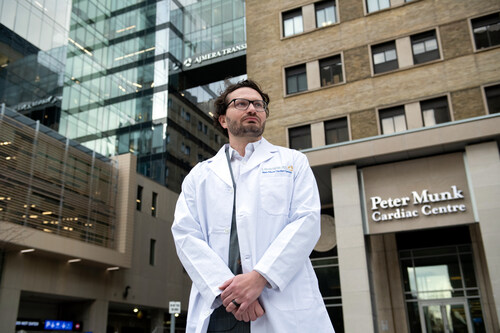**Historic First in Canada: Successful Heart Transplant Using Donor After Circulatory Death**
In a groundbreaking medical milestone for Canada, surgeons at Toronto’s University Health Network (UHN) have successfully completed a heart transplant using a donor whose heart had stopped beating—a technique known as donation after circulatory death (DCD).
Unlike traditional heart transplants that rely on organs from brain-dead donors whose hearts continue to beat, this innovative approach involves recovering hearts after life support is withdrawn and the heart has ceased beating.
In early September, a team at UHN’s Toronto General Hospital performed a transplant using a heart that had stopped beating following withdrawal of life support. Dr. Ali Rabi, the cardiac surgeon at UHN’s Peter Munk Cardiac Centre who led the surgery, explained the significance:
“Before, we only used hearts from brain-dead donors whose hearts were still beating. Now, we can use hearts that have stopped beating after life support is withdrawn. These donors are not considered brain dead. They may have a few basic reflexes but no prospect of recovery. This decision is made by the patient, their family, their treatment team, and a neurology team. The family then decides they do not want their loved one to continue like this.”
This innovative step represents a major advancement in organ transplantation and offers new hope for those waiting for a heart transplant.
**Addressing the Waitlist and Saving Lives**
Heart failure remains one of the most common reasons for hospital admission in Canada and is a leading cause of death. According to the Canadian Institute for Health Information, by the end of 2024, there were 155 adults and 29 children on the waiting list for a heart transplant.
“This surgery increases the number of heart transplants by 20 to 40 percent,” Dr. Rabi said. “It will also reduce the number of people who never receive a heart transplant and die waiting for one.”
Similar DCD heart transplant techniques have already been successfully used in countries including Australia, the U.K., and the United States. In Canada, this method is expected to increase heart transplant availability by approximately 30 percent.
**A Remarkable Moment of Renewal**
Dr. Rabi described the moment the transplanted heart started beating in the recipient as “amazing,” emphasizing the heart’s natural strength and resilience.
“This breakthrough shows how innovation can save more lives. Congratulations to UHN for this historic milestone,” he said.
He also expressed deep gratitude to donor families: “It’s the hardest day of their lives, but many find comfort knowing their loved one helped save others.”
**Encouraging the Next Generation**
Recent data from Australia and the U.S. show no difference in long-term survival rates between recipients of hearts donated after circulatory death and those from traditional brain-dead donors, according to Dr. Rabi.
He encourages young medical professionals interested in heart failure and transplantation to explore this evolving field. “I guarantee you, in the next five years, the field will be completely unrecognizable,” he added.
—
This landmark achievement not only expands the donor pool but also redefines possibilities in cardiac care, bringing hope to thousands of patients awaiting life-saving transplants across Canada.
https://globalnews.ca/news/11469587/toronto-heart-transplant/



